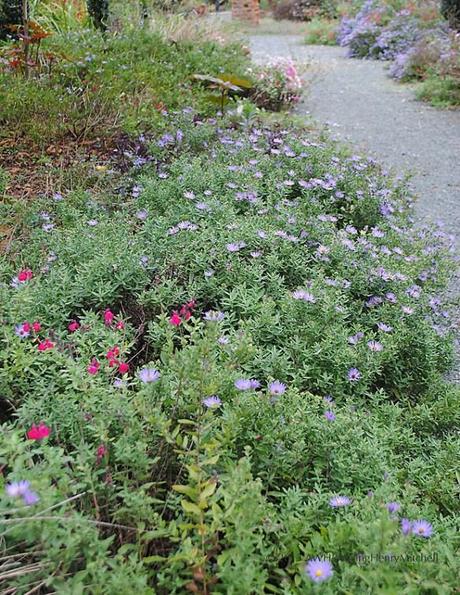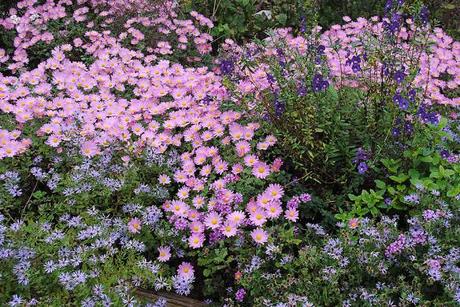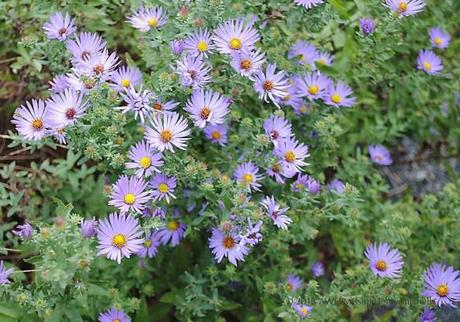I have always felt ambivalent about asters. They bloom at a time of the year when things are winding down, so their bright colors are welcome. They provide choice food for bees. But I haven’t often seen them grown well enough (certainly not in my own garden), I suppose, to firmly persuade me that their autumn benefits compensate for their rangy, dull, and unattractive appearance during the rest of the year.
Nancy Goodwin’s aster border at Montrose may have changed my mind.

Symphyotrichum oblongifolium ‘Fanny’s Aster’ at Montrose
One side of a long border holds masses of Symphotrichum oblongifolium ‘Fanny’s Aster.’ Pruning the plant aggressively in summer before the flowers set encourages dense growth and lots of blooms. Just across the way, a combination of smooth aster (Symphyotrichum laeve or Aster laevis ‘Bluebird’) and Chrysanthemum x morifolium ‘Ryan’s Pink’ blazes so intensely you forget that summer is over and frost is in the forecast.

Chrysanthemum x morifolium ‘Ryan’s Pink’ and Aster laevis ‘Bluebird.’
These might be worth a little square footage in the garden after all.

Aster laevis ‘Bluebird’

